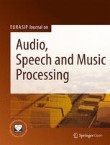An MDCT domain three-point interpolation-based low-complexity frequency estimator
Signal frequency estimation is a problem of significance in many applications including audio signal processing. Compressed domain audio frequency estimators that directly use the modified discrete cosine tran...
